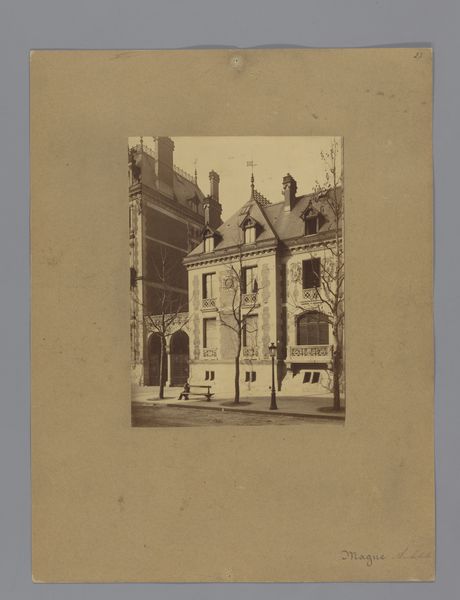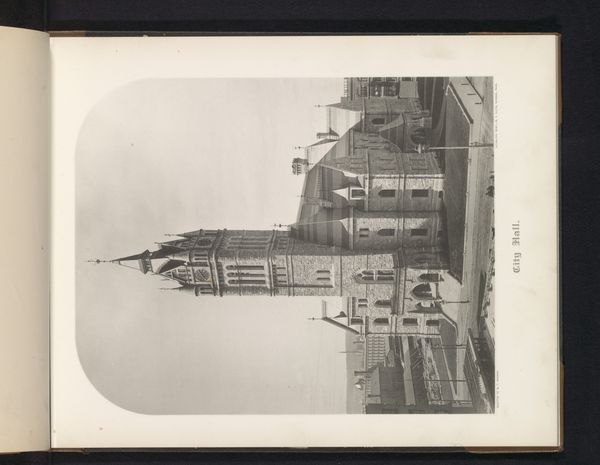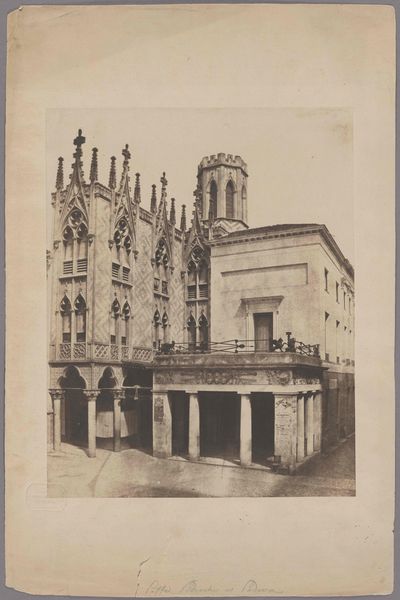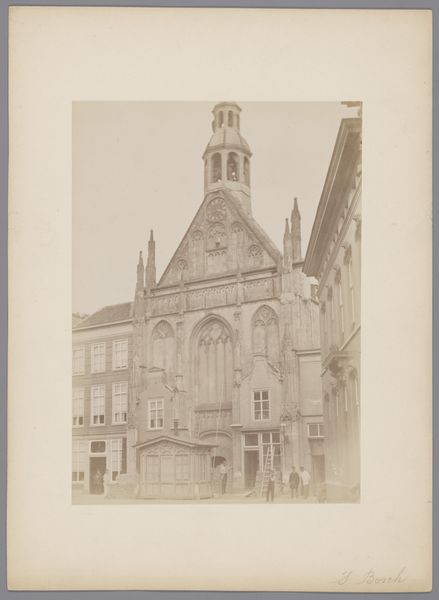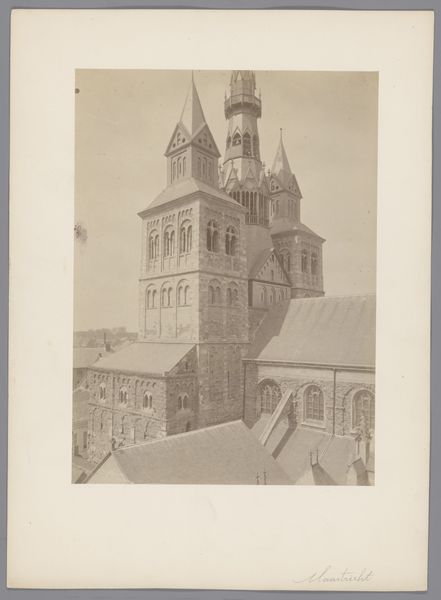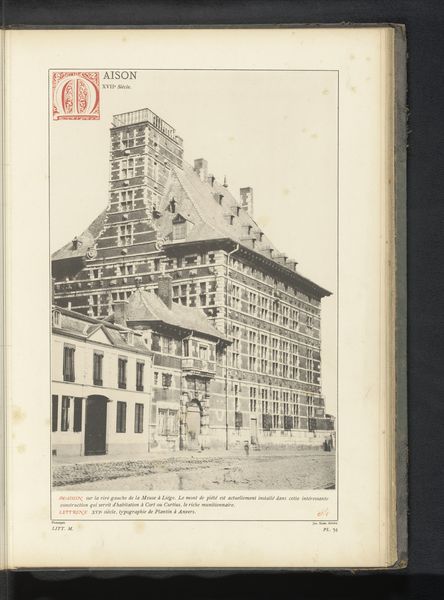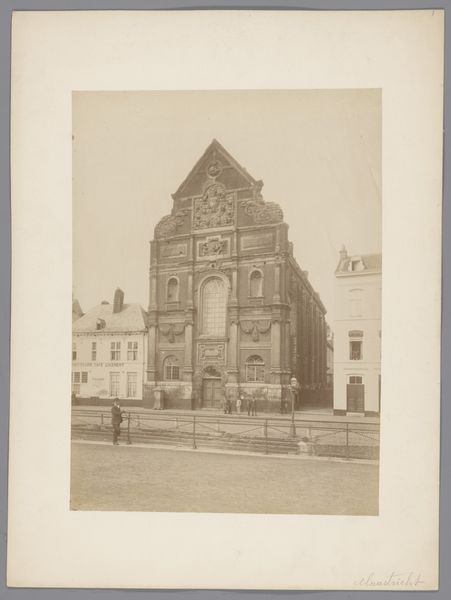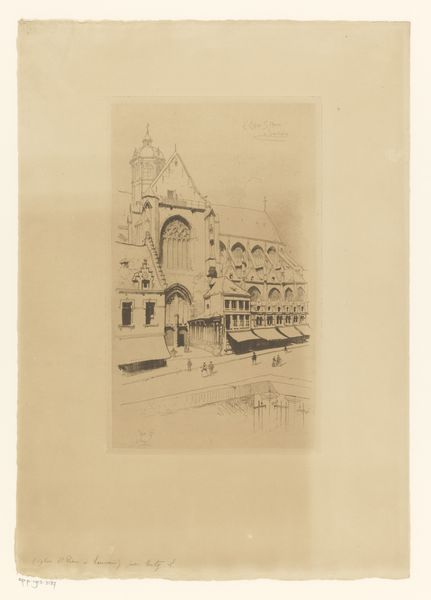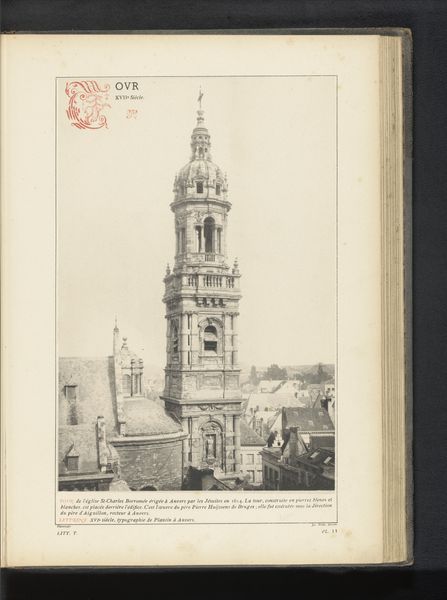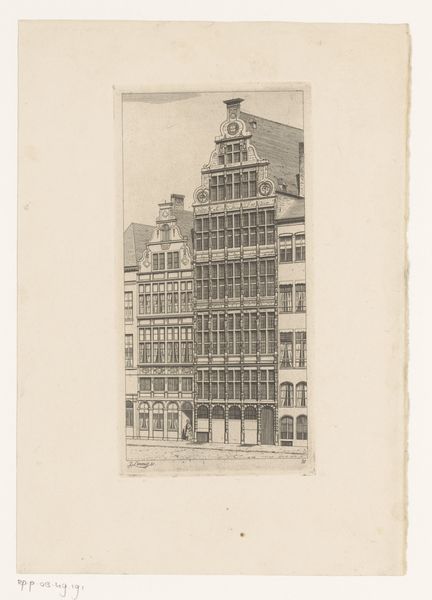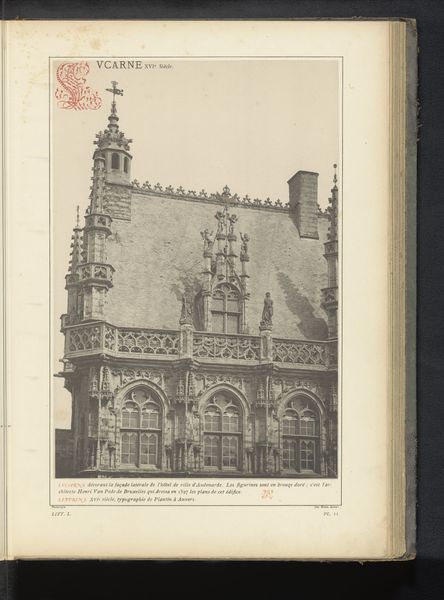
print, photography
# print
#
photography
#
cityscape
#
realism
Dimensions: height 391 mm, width 274 mm
Copyright: Rijks Museum: Open Domain
Curator: Let's turn our attention to this arresting photograph, a vintage print depicting the Campanile of Giotto in Florence, Italy. Giorgio Sommer is credited as the artist, and the image likely dates from somewhere between 1863 and 1900. Editor: It’s striking, isn't it? Almost overwhelming. The Campanile dominates the frame, feels like a defiant statement against the sky, even in this sepia-toned image. There’s a real sense of vertical power here. Curator: Absolutely. And that’s a carefully constructed power, reflecting the social and political landscape of Florence. This tower wasn’t just a bell tower; it was a symbol of civic pride, an embodiment of Florentine ambition. Sommer, in capturing this, documented the evolving public image of a city defining itself. Editor: The positioning of the image emphasizes how masculine, really, the architectural landscape was. Even the scaffolding could suggest the tower as a continually erected expression of power and authority. Do you see how that reflects onto the idea of the 'artist' and 'architect' at the time? Curator: That's a valid point. Sommer operated in a commercial market eager for these views, profiting from the monumentality but, from my standpoint, doing so within established visual norms, subtly reinforcing prevailing power structures. These images served to disseminate a specific, curated image of Florence. We see here how it served the upper classes when Italy was in the later throes of Italian Unification. Editor: And how this monument, and photographic depictions like this, served to nationalize culture, effectively building consensus around Italian cultural identity during a period of great socio-political shift. It certainly prompts thinking around how architecture shapes narratives of power. Curator: Precisely. So, while Sommer's image is technically a "cityscape," we cannot disassociate the political symbolism. Editor: It serves as a potent reminder of the multifaceted ways we encounter both images and architectural spaces and who holds the power within them. Curator: Indeed. It provides a historical view while asking pertinent questions that hold societal implications even to this day.
Comments
No comments
Be the first to comment and join the conversation on the ultimate creative platform.

